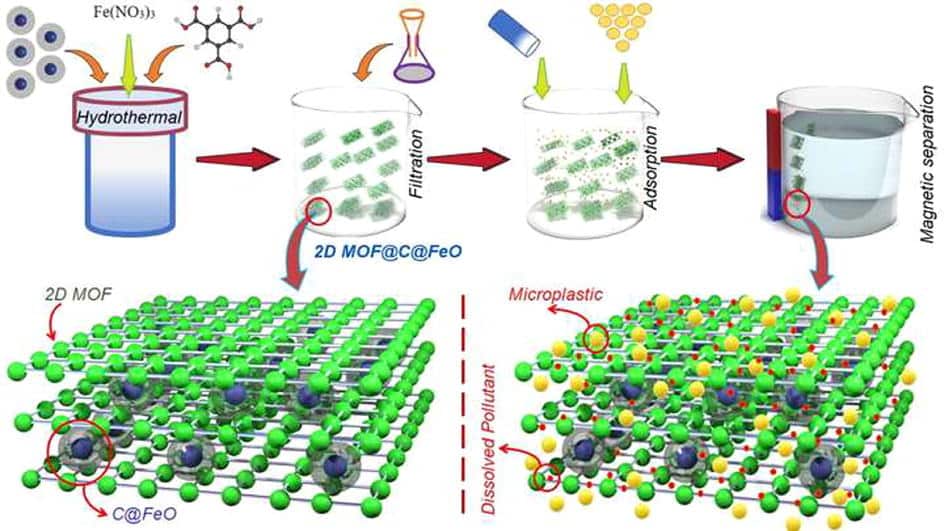Researchers Use Magnets to Remove Microplastics From Water

 Why you can trust us
Why you can trust us
Founded in 2005 as an Ohio-based environmental newspaper, EcoWatch is a digital platform dedicated to publishing quality, science-based content on environmental issues, causes, and solutions.
Researchers at Royal Melbourne Institute of Technology (RMIT University) have discovered a way to use magnetic materials to quickly and affordably remove microplastics from water. The findings show the materials work to remove plastic particles 1,000 times smaller than plastics currently detectable in existing water treatment plants.
The team developed an adsorbent from nanomaterials, including iron, that attracts the plastic particles in the water, working in as little as one hour compared to other microplastic removal methods that can take several days to work. The adsorbent is mixed into water, and microplastics and even dissolved pollutants are attracted to the adsorbent. Then, because of the iron content, the researchers were able to use magnets to collect the microplastics and dissolved pollutants.
“The nano-pillar structure we’ve engineered to remove this pollution, which is impossible to see but very harmful to the environment, is recycled from waste and can be used multiple times,” Nicky Eshtiaghi, lead researcher and professor from RMIT’s School of Environmental and Chemical Engineering, said in a statement. “This is a big win for the environment and the circular economy.”
The research, published in Chemical Engineering Journal, explained that about 4.8 and 12.7 million tons of microplastics enter the oceans each year, and smaller microplastics under 5 millimeters cannot be detected and filtered out by existing water treatment technology. Some options, like filter papers or photodegradation, have been tested before, but these methods can’t capture the smallest microplastics or take a long time to remove the pollutants.

“Microplastics smaller than 5 millimeters, which can take up to 450 years to degrade, are not detectable and removable through conventional treatment systems, resulting in millions of tonnes being released into the sea every year,” co-lead researcher Nasir Mahmood said. This is not only harmful for aquatic life, but also has significant negative impacts on human health.”
The RMIT team’s developed adsorbent — as the study explained, nanopillared structures composed of two-dimensional metal–organic framework separated by carbon encapsulated iron oxide nanopillars — removed about 100% of microplastics from the water sample in just one hour.
The adsorbent is designed to be a quick, cost-effective solution to cleaning up microplastics and dissolved pollutants in water. Now, the team is looking for collaborators to scale up the project and test it in wastewater treatment facilities.
“The results suggest a promising pathway to addressing the removal of mixed contaminants from water in a single process and highlighting its potential in resolving critical industrial and domestic wastewater treatment,” the study authors wrote.
Subscribe to get exclusive updates in our daily newsletter!
By signing up, you agree to the Terms of Use and Privacy Policy & to receive electronic communications from EcoWatch Media Group, which may include marketing promotions, advertisements and sponsored content.

 233k
233k  41k
41k  Subscribe
Subscribe 




